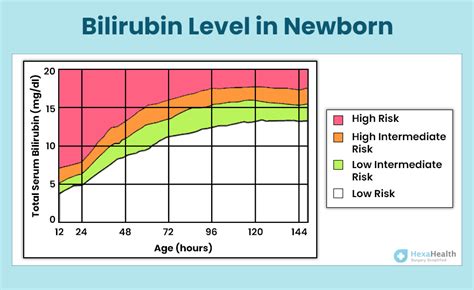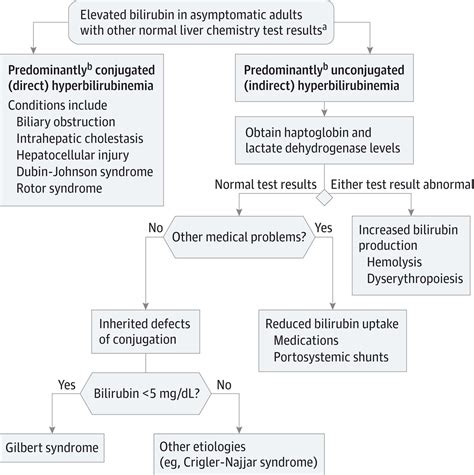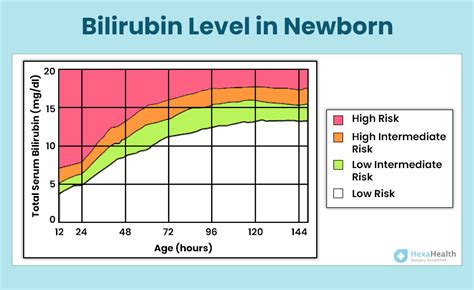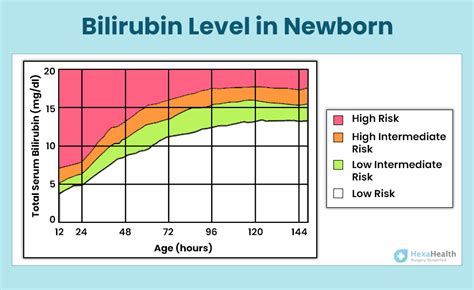Intro
Learn about newborn bilirubin levels, jaundice symptoms, and phototherapy treatments in our comprehensive guide, covering high bilirubin risks, breastfeeding effects, and infant liver function.
Newborn bilirubin levels are a crucial aspect of a baby's health, particularly in the first few weeks of life. Bilirubin is a yellow pigment that is produced during the breakdown of red blood cells, and high levels of it can cause jaundice, a condition characterized by a yellowish discoloration of the skin and eyes. Jaundice is a common condition that affects many newborns, and it is essential for parents to understand the causes, symptoms, and treatment options available. In this article, we will delve into the world of newborn bilirubin levels, exploring the importance of monitoring them, the risks associated with high levels, and the various treatment options available.
As a new parent, it is natural to feel concerned about the health and well-being of your baby. One of the first things that you will notice after birth is the color of your baby's skin and eyes. If your baby's skin and eyes appear yellowish, it may be a sign of jaundice, which is caused by high levels of bilirubin in the blood. Bilirubin is a natural byproduct of the breakdown of red blood cells, and it is usually processed by the liver and excreted in the stool. However, in newborns, the liver may not be mature enough to process bilirubin efficiently, leading to a buildup of the pigment in the blood.
The first few weeks of life are critical for monitoring newborn bilirubin levels. During this period, the baby's liver is still maturing, and the risk of jaundice is higher. If left untreated, high bilirubin levels can cause serious health problems, including brain damage and hearing loss. Therefore, it is essential for parents to be aware of the signs and symptoms of jaundice and to seek medical attention if they notice any unusual changes in their baby's appearance or behavior. In the following sections, we will explore the importance of monitoring newborn bilirubin levels, the risks associated with high levels, and the various treatment options available.
Newborn Bilirubin Levels: What You Need to Know

Causes of High Bilirubin Levels
There are several causes of high bilirubin levels in newborns, including: * Premature birth: Premature babies are more likely to have high bilirubin levels due to their immature liver. * Blood type incompatibility: If the mother's blood type is different from the baby's, it can cause the breakdown of red blood cells and lead to high bilirubin levels. * Infection: Infections such as sepsis or meningitis can cause high bilirubin levels. * Genetic disorders: Certain genetic disorders, such as Gilbert's syndrome, can affect the liver's ability to process bilirubin. * Breastfeeding: Breastfeeding can cause high bilirubin levels in some babies, particularly if the mother has a low milk supply or if the baby is not latched properly.Risks Associated with High Bilirubin Levels

Treatment Options for High Bilirubin Levels
The treatment for high bilirubin levels depends on the underlying cause and the severity of the condition. The following are some common treatment options: * Phototherapy: Phototherapy involves exposing the baby to special lights that help to break down bilirubin in the skin. * Exchange transfusion: In severe cases of jaundice, an exchange transfusion may be necessary to remove the bilirubin from the blood. * Medications: Medications such as phenobarbital may be used to help the liver process bilirubin more efficiently. * Fluids and electrolytes: Babies with high bilirubin levels may need to receive fluids and electrolytes to prevent dehydration.Monitoring Newborn Bilirubin Levels

Prevention of High Bilirubin Levels
While it is not possible to prevent all cases of high bilirubin levels, there are some steps that parents can take to reduce the risk: * Breastfeeding: Breastfeeding can help to reduce the risk of high bilirubin levels. * Frequent feedings: Frequent feedings can help to stimulate bowel movements and reduce the risk of high bilirubin levels. * Monitoring: Monitoring your baby's bilirubin levels and reporting any signs of jaundice to your doctor can help to prevent serious health problems.Newborn Bilirubin Levels and Parental Concerns

Addressing Parental Concerns
It is essential for parents to address their concerns with their doctor or healthcare provider. The following are some tips for parents: * Ask questions: Don't hesitate to ask your doctor or healthcare provider any questions you may have about newborn bilirubin levels. * Seek a second opinion: If you are not satisfied with the advice or treatment provided by your doctor, seek a second opinion. * Stay informed: Stay informed about newborn bilirubin levels and the latest treatment options available.Conclusion and Next Steps

What are the normal ranges for newborn bilirubin levels?
+The normal ranges for newborn bilirubin levels vary depending on the age of the baby and the method of measurement. Generally, bilirubin levels are considered normal if they are below 15 mg/dL (257 μmol/L) in the first 24 hours of life, below 18 mg/dL (308 μmol/L) at 24-48 hours, and below 20 mg/dL (342 μmol/L) at 48-72 hours.
What are the causes of high bilirubin levels in newborns?
+There are several causes of high bilirubin levels in newborns, including premature birth, blood type incompatibility, infection, genetic disorders, and breastfeeding.
What are the treatment options for high bilirubin levels in newborns?
+The treatment for high bilirubin levels depends on the underlying cause and the severity of the condition. Common treatment options include phototherapy, exchange transfusion, medications, and fluids and electrolytes.
How can parents monitor their baby's bilirubin levels at home?
+Parents can monitor their baby's bilirubin levels at home by looking for signs of jaundice, such as yellowish skin and eyes, and reporting them to their doctor immediately. They can also use a non-invasive device that uses light to measure the level of bilirubin in the skin.
What are the risks associated with high bilirubin levels in newborns?
+High bilirubin levels can cause serious health problems in newborns, including brain damage, hearing loss, eye problems, and increased risk of infection.
